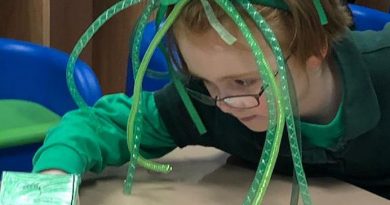4 tips for handling teaching evaluations during COVID
While administrators might be tempted to relax evaluations during the pandemic, teachers deserve attention and candid feedback to grow and be successful.
COVID has caused many necessary twists on traditional K-12 education: technology demands, masked learning, virtual learning, hybrid learning, safety protocols, budget adjustments.
One pivot to avoid? Pausing teacher evaluations. While many states and schools may pause the formal evaluation requirement, thinking it is another on a long list of “to-dos,” it is critical to continue the educators’ feedback process.
Why? The constructive feedback provided to teachers during the evaluation process has proven to improve culture and empower employees. It helps teachers (and any employee) to develop their strengths and addresses their areas of need. Take a look at your workforce. According to research, millennials desire coaches rather than bosses (Gallup, Inc., 2016). They prefer those who can mentor and develop their strengths.
It is tempting for administrators to ease off the gas. After all, teachers are busier than ever, juggling virtual students’ demands and providing curriculum in a completely new way. They don’t want to be judged on their ability to conduct zoom calls, which is a fair point. Administrators don’t have the time to invest in the process, with many new demands on their time.
But whether it is virtual, hybrid, or in person, good teaching is good teaching. Regardless of the environment, educational leaders are charged with setting the stage for teachers’ success and, ultimately, students. Teachers deserve attention and candid feedback to grow and be successful.
There are four points for administrators to consider as they engage in evaluations during the second half of the COVID school year.
- Make the time. There are so many different demands on you, many more than just 12 months ago. If you are not taking this period as a moment of reflection to rethink how instruction is being delivered, you miss the boat. It may look different, but we do not need to revise the rubrics. We are still looking for creative strategies that deliver quality instruction.
- Zoom masters. High technical skills are great, but they do not necessarily translate into quality instruction. Are teachers creative in ways to engage students? Are they checking for understanding? Are they providing opportunities for students to participate in hands-on activities and collaborate with other students as appropriate? Are they working together to share best practices?
- Quality, not quantity. In our visits with clients, we find that certain school administrators are counting more heavily on the teacher artifacts given the inability to walk down a hallway and sit in on a lesson. De-emphasize the number of artifacts and ask teachers to focus on fewer quality pieces that reflect their teaching practice. Set a limit to help them and stay focused.
- Call an audible. Every rubric has a classroom environment on it. Recognize that student engagement may look different this year. A hands-on or small group may not be the safest option now. Be flexible and adjust what good instruction looks like.
What should change during COVID? Oftentimes educators use the terms observations and evaluations interchangeably. An observation is a classroom visit/dropping in on zoom and providing feedback. Evaluation is the judgment or putting a score on that observation. You can get away from judgment but still observe and give feedback. That’s important now more than ever, given the challenging environment we all face.
Tamper the judgment, but don’t fail on the feedback, and the result will be of value to both your beginning and veteran teachers.
Source: https://districtadministration.com/4-tips-for-handling-teaching-evaluations-during-covid/




